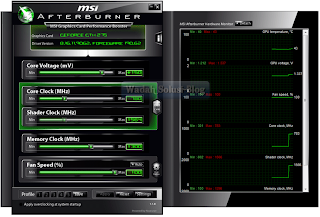

The great thing about MSI Afterburner is that it allows you to slowly and carefully adjust the GPU’s core clock and tinker with the memory clock, fan speed, power limit, and core voltage. However, it truly shines in its overclocking and underclocking capabilities.

For such a powerful and useful tool, it’s important to know the full extent of its capabilities, so you can use them to their fullest.Īs previously mentioned, MSI Afterburner is a great tool for monitoring and benchmarking. Unfortunately, using nVidia Inspector, I lose the undervolting, and it is quite annoying to have to use several different OC shortcuts on the desktop to change my GPU settings for gaming or content creation or mining.If you have previously heard of this piece of software, you likely have some idea of what it is and what it’s capable of. Note I also disabled the "force P2 state" in nVidia Profile Inspector. I tried to use the MSI Afterburner unofficial overclocking mode by editing the config file (setting to 1 and adding the "EULA" sentence), but nothing changes, the limit is still +1500 whatever I do. Unfortunately nVidia Inspector does not allow me any voltage control at all. And this is annoying as I can use nVidia Inspector to set the Memory at a stable 8700MHz. The problem is that MSI Afterburner does not let me get my VRAM above +1500 MHz, so a total of 8500MHz. I tried to use MSI Afterburner to undervolt and underclock the GPU core, and overclock the VRAM. It currently can mine at nearly 68MH/s 120W power draw. This laptop is Lenovo Legion 5 Pro with a nVidia RTX 3070 (140W max TDP) GPU. I am currently mining Ethereum on my Laptop when I sleep or am away from home.


 0 kommentar(er)
0 kommentar(er)
